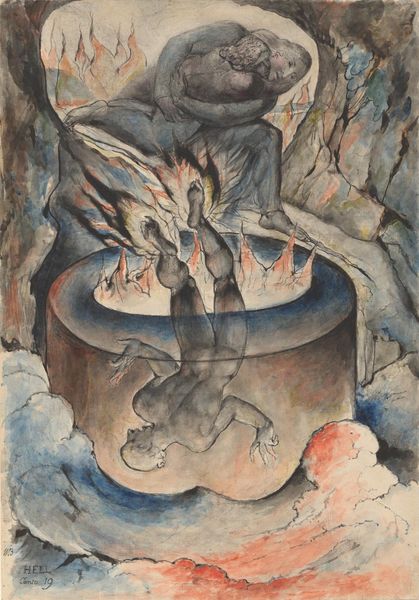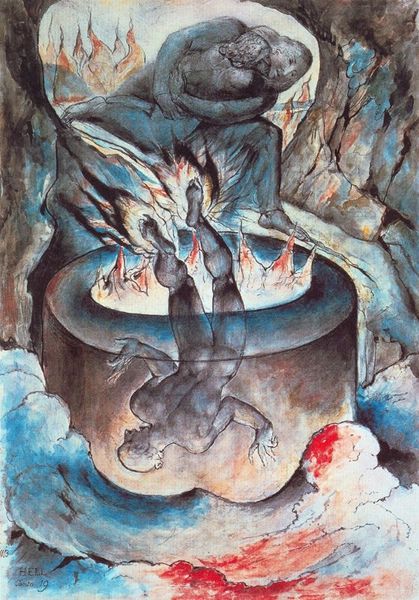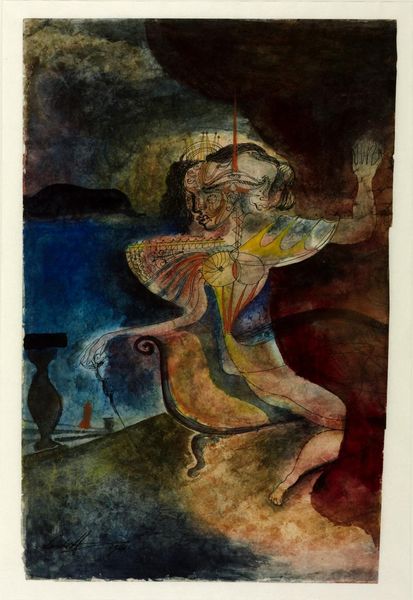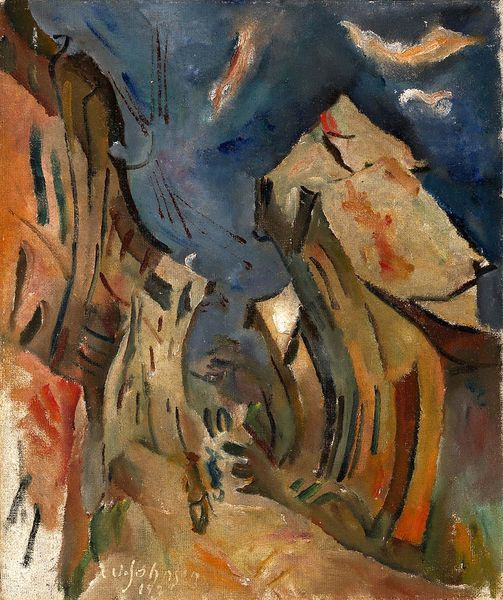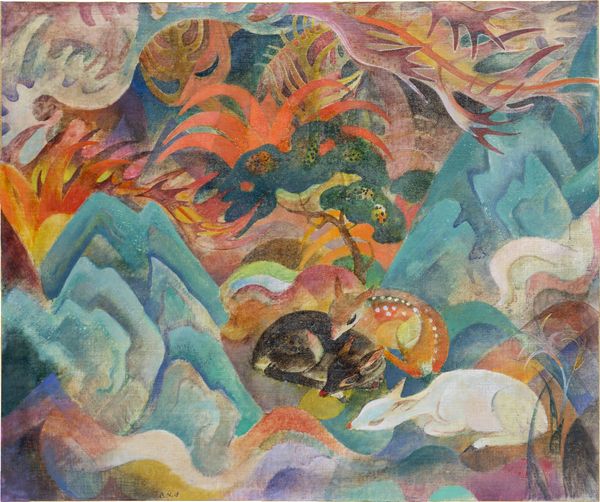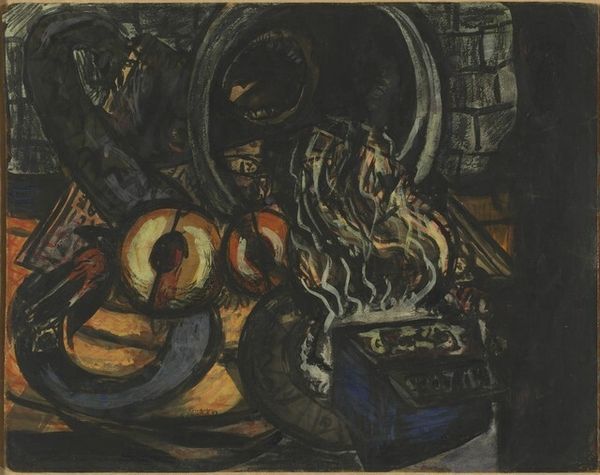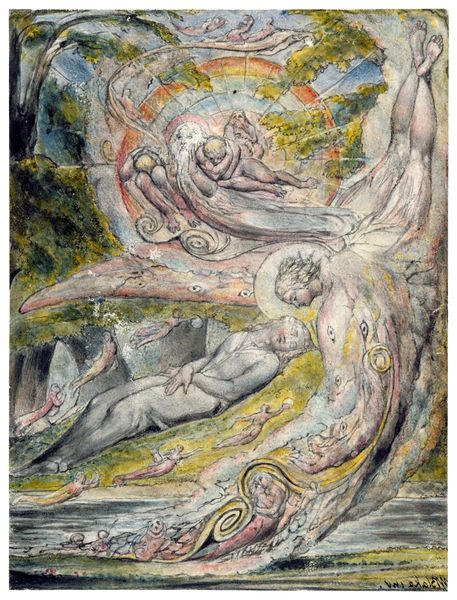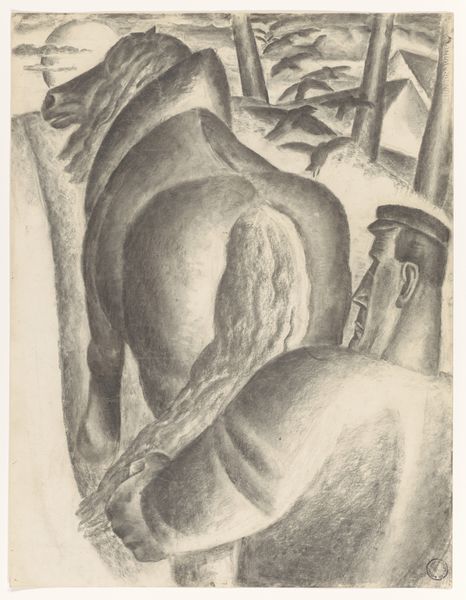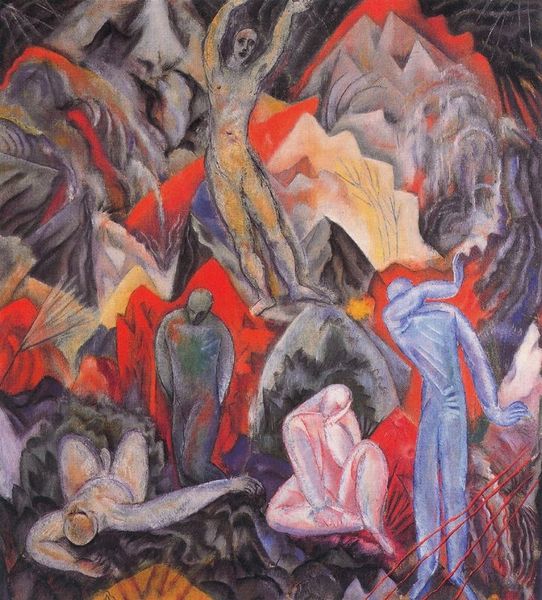
Dimensions: support: 372 x 527 mm
Copyright: NaN
Editor: Oh my god, that's... intense. It feels like watching a nightmare unfold. Curator: This watercolor is by William Blake. It’s called "The Devils, with Dante and Virgil by the Side of the Pool" and is currently part of the Tate Collections. Blake, born in 1757, was deeply engaged with social justice and religious critique, so you see that come through. Editor: The figure plunging into the pool—is that supposed to be one of the damned? I feel like he’s almost surrendering to the chaos of it all. Curator: Indeed. Blake uses Dante's Inferno as a framework to explore themes of spiritual and moral corruption, visualizing the consequences of societal ills and personal failings. Editor: It’s fascinating how the classical and the radical meet in Blake's work. It’s like he’s using these established narratives to critique power. Curator: Precisely. Blake’s engagement with Dante allows him to interrogate power structures and comment on injustice, using the visual language of damnation. Editor: Thinking about it, Blake's hell might not be a place, but a state of being. Curator: Exactly. It's about the internal struggles and societal forces that imprison us. Editor: Gives you chills, doesn't it? A real wake-up call.
Comments
tate 8 months ago
⋮
http://www.tate.org.uk/art/artworks/blake-the-devils-with-dante-and-virgil-by-the-side-of-the-pool-n03358
Join the conversation
Join millions of artists and users on Artera today and experience the ultimate creative platform.
tate 8 months ago
⋮
This is Blake’s illustration to part of Dante’s Inferno, from the Divine Comedy. It shows the trench of corrupt politicians in the eight circle of Hell. Above are the stone bridges that Dante describes as characteristic of this part of Hell, which was reserved for the fraudulent. The half-submerged figures on the right are people who sold public offices; they are drowning in a sea of boiling pitch. Virgil and Dante are watching on the left, escorted by a group of devils. Gallery label, February 2004
